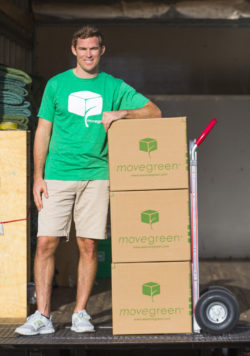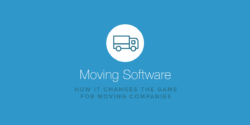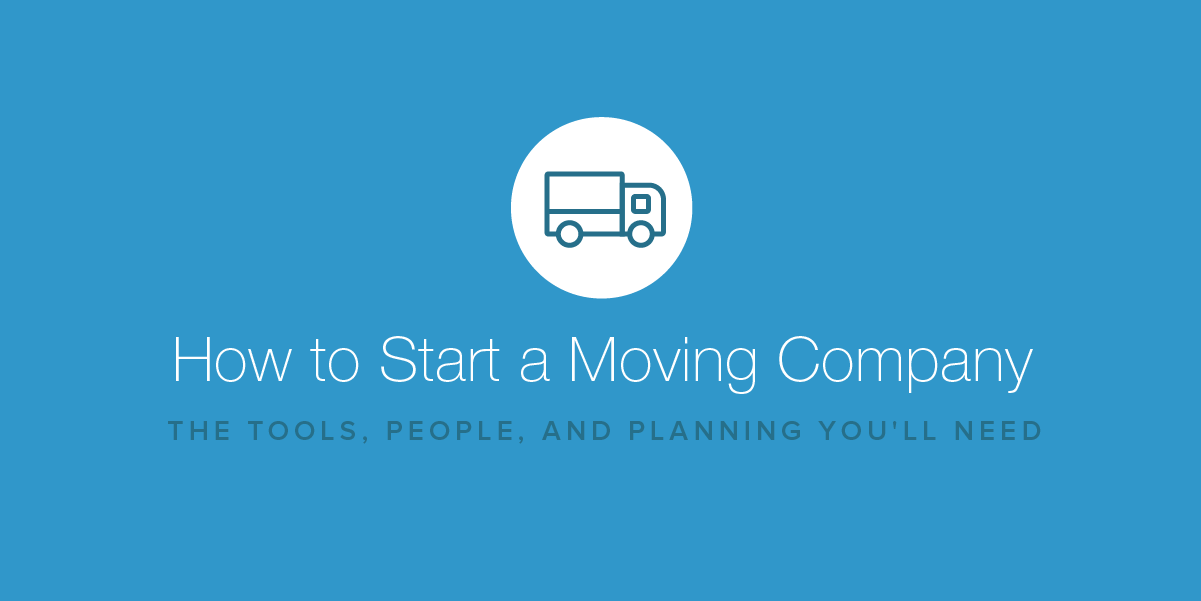How to Start a Moving Company: The Tools, People, and Planning You’ll Need
- April 10, 2018
- By: Vonigo
Want to know how to start a moving company? The best advice we could give is to talk to other movers and ask them how they did it. Moving companies in areas other than your own might be willing to share their experiences with you and save you a lot of time and trouble.
It’s easy to think to that all you need a truck and a helper, but there’s much more to it than that.
How to Start a Moving Company on a Budget
Like any new company, you want to invest only what’s necessary in the beginning, and then expand as you start earning revenue. The basics? Yes, you need a truck. Given that furniture is heavy, you’ll need at least one helper. Most of the rest of the requirements you can purchase or lease on a trial basis, and invest in them when it makes fiscal sense to do so. You’ll have to do some math to figure out when your jobs and revenue can justify purchases; when it becomes more cost-effective to own your own equipment rather than paying to lease.
Partnership or Corporation?
The first questions to answer is whether your business will be a sole proprietorship (one owner), a partnership, or a corporation. For moving companies and the various liabilities (see below for more detail), incorporating might be the best approach, albeit the most costly.
A Business License
Don’t overlook this one. In your local area (town, city, etc), there will be a requirement to have a license to operate as a business. It’s not prohibitively expensive and makes you legitimate.
The licensing process might also require your business to have a name, which will mean paying for a business name registration as well. In most jurisdictions, a legal business name has to have one unique and one descriptive identifier. For example, Acme Moving. In that example, “Acme” is the unique (not unique, but you get the idea) term, and “Moving” is the descriptive term. All that said, this is all to describe the name of your business as an entity. That is, what would appear at the top of your cheques. What you paint on your trucks doesn’t have to adhere to all of these rules. “Acme” will get the job done if you wish. Save the fancy truck paint job for after the cash starts to flow, however.
Insurance
By far, the least interesting item on this list, but also the most crucial. As a moving company, you are accepting responsibility for people’s belongings. Those belongings could have a very high value. You have to be prepared for any eventuality. Things could be dropped or damaged during shipping. Unforeseen circumstances (weather, traffic, theft, border crossings, truck trouble) could affect your delivery times and find you in breach of contract. The only way to ensure that you will not be liable for any of that damage is to be insured. If a customer takes legal action and you are not insured or incorporated, you could even be personally responsible for financial damages. The cost of insurance protects you from this worst-case scenario and mitigates that risk.
This is precisely why you don’t see more “guy with a truck” moving companies. Sure, they exist, but they are taking huge risks. To do the job right, you have to have your paperwork in line. Start by researching local insurance companies and getting quotes from them on what you need.
Dollies, Packing Materials, Boxes, Tape, and More
To properly move a customer’s belongings safely, you need the right packing materials and tools. Dollies will spare your back when moving boxes and furniture, and packing materials like blankets, plastic wrap and tape will help secure loose items like drawers or delicate furnishings.
Some packing materials like boxes and tape can actually be profit drivers for you too. See if you can source a supplier for boxes, and become a reseller of them. Everyone who moves needs boxes, and you can make life easier for your customers and make an extra bit of profit by providing boxes and packing services. This has the added bonus of ensuring some uniformity and professionalism to the packing process as well, which will make life easier for you during the move itself.
Establish a Pricing Structure
In order to sell your services, you’re going to have to be able to give customers a quote on what your services will cost. This is arguably the most important step. Most of what we have discussed already are the costs associated with how to start a moving company. Your pricing structure has to account for these costs, including labor costs of your team, and still leave some profit for you. Don’t forget about your vehicle maintenance, insurance, fuel, drive times, wages, advertising, materials, and any other costs you’ve had to bear to make the move happen.
The more transparent your pricing structure, the better. It’s tempting to charge by the hour—in the event of delays or unforeseen circumstances, your costs will be covered. For the customer though, this approach can seem less than ideal. It can incentivize your team to work slowly, which won’t help your reputation.
 For this reason, many moving companies base their pricing structures around volume or weight. For example, you can offer to price based on the number of rooms in the homes you are moving from. Or, you can price based on the size of the truck required, or the percentage of space in the truck that the move requires. There is no easy formula, which is both a blessing and a curse. How you quote for jobs can be a differentiator from your competition, both to the good and bad. Of all of the challenges facing new moving companies, this may be the most difficult.
For this reason, many moving companies base their pricing structures around volume or weight. For example, you can offer to price based on the number of rooms in the homes you are moving from. Or, you can price based on the size of the truck required, or the percentage of space in the truck that the move requires. There is no easy formula, which is both a blessing and a curse. How you quote for jobs can be a differentiator from your competition, both to the good and bad. Of all of the challenges facing new moving companies, this may be the most difficult.
Some Cautionary Notes on Pricing Structures
In the United States, for example, the Department of Transportation has rules about what moving companies can charge. Make sure you are compliant with the laws in your State before proceeding with a plan. Also, you may be tempted to try to win business by being the lowest cost provider in your area. While this might seem like a smart strategy for getting market share quickly, it’s not a sustainable plan. For the sake of the future of your business, you are better off finding another way to differentiate yourself than just being the lowest cost provider. Promote your professionalism, punctuality, local knowledge, or any other attribute than simply being the lowest cost provider. Your balance sheet will thank you in the long run.
People, Your Most Important Resource
As we alluded to above, you’re not going to be able to do this alone. You’ll need some help with moving itself, as we’ve mentioned. To start with, you might prefer to have a small number of part-time helpers, who you engage only when you have a move booked. At some point, it might make sense to make them full-time team members, based on how much business you are getting.
If you’re going to be the primary truck driver at the outset, you have to consider whether you’re also the one handling sales, bookings, schedulings, and advertising. Do you need an office staff, and a location from which they can work? Are your home office and a smartphone enough for you to start with?
Advertising and Marketing
How will you attract new business? For new moving businesses, advertising might not the best way to spend your money. It tends to act like a megaphone to the masses and can be costly. You don’t want to spend a lot of money advertising to people who might not have any plans to move in the short term. Paid search ads can help with this, as people searching for movers have a buying intent. Just make sure that you are not paying too much to bid on ad placements and cutting into your potential profits. Instead of buying advertising and hoping the jobs start to roll in, consider doing some strategic marketing and outbound sales.
Think about gatekeepers that have access to people who are moving. Are there real estate companies that you can partner with to become a service provider? Are there companies or industries in your area that are seeing a lot of growth? Or industries that are downsizing and have a lot of employees moving to and from jobs? Does your community have a “welcome wagon” group that you can align with?
Websites, Booking and Scheduling Software
 We’ve reached a point in time where the absence of a mobile-optimized web presence, or a paper-based booking system, puts you at a disadvantage. It might seem like a cost-effective way to start your business, but it could also make you look unprofessional. Research ways to launch an affordable website, and consider whether moving software is right for you. Even from the start, having moving software to handle your bookings, scheduling, pricing and invoicing can save you a lot of time and trouble in administration costs. It can improve your cash flow. It can also help you access a larger group of customers that prefer to seek quotes and book online.
We’ve reached a point in time where the absence of a mobile-optimized web presence, or a paper-based booking system, puts you at a disadvantage. It might seem like a cost-effective way to start your business, but it could also make you look unprofessional. Research ways to launch an affordable website, and consider whether moving software is right for you. Even from the start, having moving software to handle your bookings, scheduling, pricing and invoicing can save you a lot of time and trouble in administration costs. It can improve your cash flow. It can also help you access a larger group of customers that prefer to seek quotes and book online.
First, consider all of the above. Then you can compose a solid business plan and your projections for your business’ future success. If you overlook any of these details, it could have serious consequences to your viability. Be sure to take the time and care to plan properly.
Want to find out how moving software can help you grow and manage your business? Book a free, private demo of Vonigo.






